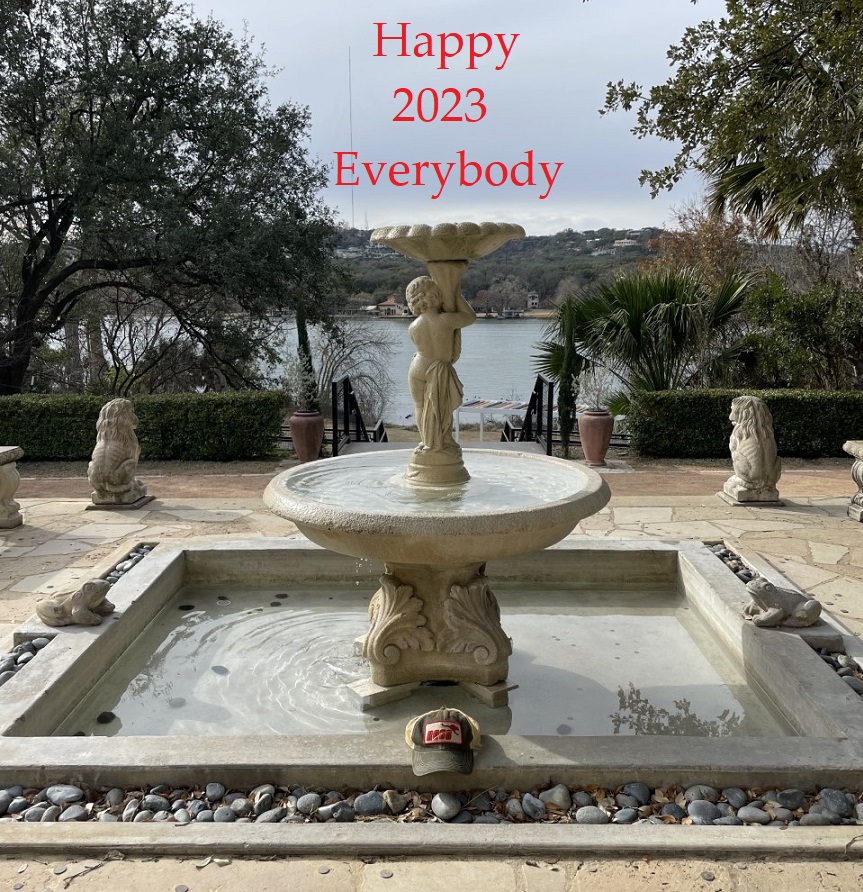
There’s a great article in this week’s Austin American-Statesman by Michael Barnes. It’s about Stephen F. Austin (the “father” of Texas) and my hometown of Austin, TX. The article is full of Austin College Kangaroo ties, which makes it a nice hook for a Roo Tale that will usher in the year 2023. Subscription required, with excerpts here.
The Barnes article reports on a recent revelation: While there has long been an urban legend that Stephen F. Austin had plans to retire in Austin, TX after the Texas Revolution, documentation recently discovered by local historian Lanny Ottosen in the Briscoe Center for American History proves the legend to be true. Ottosen recently stumbled upon an 1832 letter from Stephen F. Austin which outlined his desire to retire at Laguna Gloria on the Colorado River in Austin. Stephen F. Austin helpfully drew a map of the spot in the letter, which allowed for confirmation. The legend began in 1923, first voiced by a woman named Clara Driscoll.
Driscoll is known for her controversial leadership of the Daughters of the Republic of Texas, and that group’s efforts to restore the Alamo 100 years ago. Interest in the Alamo was high in the 1920s as the Texas Centennial approached. That interest extended to Austin College, where a relic of Davy Crockett was discovered in the AC library in 1925. The relic was accompanied by a note: “Fragment of watch chain worn by Davy Crockett [at] his death at the Alamo, March 6, 1836. Given to the Philomathean Society of Austin College by a cousin of the old hero, Mrs. A. S. Wilson of Huntsville, March, 1856.” Former AC History Professor (and official Texas State Historian) Dr. Light Cummins reported to me that the location of the Davy Crockett chain is unknown today; that chain would have been prized by Clara Driscoll.
Clara Driscoll made Austin, TX her permanent home, constructing a mansion at Laguna Gloria on the banks of the Colorado. Today, the Laguna Gloria mansion is home to The Contemporary Austin, a museum of art. Back in 1923, Driscoll loudly proclaimed Laguna Gloria as Stephen F. Austin’s future retirement home (which never took place after Austin’s untimely passing in 1836). Given much of the myth making that has frequently accompanied the Daughters and the Alamo, Driscoll’s claim about Laguna Gloria was held in suspicion by historians.
From Barnes in the Statesman:
“For years, [doubt has been cast] on what appeared to be an urban legend: That the museum located at the historic 1915 villa called Laguna Gloria, built by philanthropist Clara Driscoll Sevier on the Colorado River — now Lake Austin — was so peaceful and beautiful, Austin looked forward to retiring there. ‘The claim began in May 1923,’ Ottosen writes in an upcoming post for the Travis County Historical Commission Blog shared in advance with this newspaper, ‘when the Austin Statesman reported that Clara Driscoll Sevier told of her fortunate possession of the site selected by Stephen F. Austin for his last days. From that date forward, the story has been repeated, distorted and occasionally amplified.’”
It’s likely that Driscoll’s urban legend was in part a result of a letter written by Guy Morrison Bryan in 1847. Bryan was Stephen F. Austin’s nephew. In his letter, Bryan wrote of the retirement spot along the Colorado river. The letter, as reported by Barnes in the Statesman: “Mother (Stephen F. Austin’s sister Emily Perry) told me a little incident yesterday which occurred with Uncle (Stephen F. Austin) some years ago. When harassed with the…turbulent spirits of the colony, he said he would…go to Cypress Springs, he would there be so far out of the world he knew nobody would ever find him.”
Guy Morrison Bryan’s mother, Emily Perry, was more than just Stephen F. Austin’s sister. She was also the first benefactor of Austin College. When Austin College founder Daniel Baker visited Emily Perry in the 1840s with the idea of establishing a Presbyterian college, Perry was enthusiastic and promised financial support on the spot. The support established a relationship between the Austin/Perry/Bryan families and Austin College that continues to this day. Without the support of Bryan’s mother, it’s unlikely the school in Sherman, TX would be named Austin College.
The Austin/Perry/Bryan family support of Austin College included Guy Morrison Bryan himself. Bryan commissioned a stained-glass window of his uncle Stephen F. Austin in the late 19th century for the old AC Admin Building. But Ol’ Main burned in 1913 and the window instead sat in storage in the basement of Thompson Hall for decades. From Dr. Light Cummins & his book “Austin College: A Sesquicentennial History:”
“Campus legend holds that [the window was] sold to a junk dealer during the depression in order to raise money. The window ended up in the possession of Dr. A. M. Pate Jr., a patron of historical causes who also served on the college’s board of trustees. Dr. Pate happily returned the window and provided funds for its installation in the [new] Administration Building.” The stained-glass window commissioned by Bryan still hangs in the AC Administration building today.
Clara Driscoll likely used the Bryan letter to claim her Laguna Gloria as the same exact spot as Austin’s Cypress Springs. But how could Driscoll be sure? In addition to the lack of a map, the original location of Cypress Springs in 1847 was now submerged beneath the waters of Lake Austin, a consequence of the Lower Colorado River Authority (LCRA)’s construction of a series of dams along the Colorado River in the 1930s. And the creation of Lake Austin is, interestingly, the work of yet another Austin College Kangaroo.
Walter E. Long graduated from Austin College in 1910. At AC, Long was the editor of the Chromascope, a student instructor of Latin & Math, and President of the Y.M.C.A. (the athletics department of its day). After graduation, Long moved to Austin, TX and began a life-long love affair with the city. He is considered the father of Austin city planning, serving as manager of the Austin Chamber of Commerce for 35 years. In retirement, Long wrote about the histories of the University of Texas, the Texas Legislature, and Stephen F. Austin himself in a book entitled “Stephen F. Austin’s Legacies.”
Long also established the predecessor organization of the LCRA, an entity tasked with taming the flooding suffered by the city of Austin by constructing dams along the Colorado. With the help of Austin Mayor Tom Miller and FDR New Deal funding, Long’s LCRA constructed a permanent dam just south of Laguna Gloria. Long & the Austin Chamber of Commerce voted to name it the Tom Miller dam, creating the Lake Austin that submerged Stephen F. Austin’s Cypress Springs forever.
From the 1957 Austin American Statesman:
“The story of the effort to bring the Colorado River under control is a long and heartbreaking one. It culminated in the creation of a state agency known as the Lower Colorado River Authority, which has obtained national attention for its complete management of the Colorado River. Walter E. Long, who played a prominent part in it, has told this story in a small volume entitled ‘From Flood to Faucet.’” From Long:
“Without the dams, ‘there would have been no water for steam condensation in the Austin power plant, no water for air conditioning, fighting fires, hotels, office buildings, the State Capitol, or the University of Texas. The [Colorado River dams] matter was brought to the attention of President Roosevelt [during the Depression]. The President was finally impressed with the importance of this project and stated ‘it would be worth $400,000-500,000 to stop these floods and conserve the water if no other use were made of the dam.’ The President approved the allotment.”
Walter E. Long also had a keen interest in the Laguna Gloria legend and was aware of rumors that a letter from Stephen F. Austin himself might validate the legend. Long is mentioned by Barnes in his Statesman article:
“’In 1962, when Walter Long…was writing ‘Stephen F. Austin’s Legacies,’ he asked the Laguna Gloria Museum about the original [1832 Stephen F. Austin] letter. Museum leaders [responded that] the original had been lost. Miraculously, the original letter is now in the Moses and Stephen F. Austin papers at Briscoe Center,’ Ottosen writes. ‘The center has no record of who donated it, so how it went from Laguna Gloria to Briscoe is a mystery, but it survives.’”
The letter, discovered by Ottosen at Briscoe, includes a map which conclusively proves that Stephen F. Austin’s Cypress Springs is indeed Clara Driscoll’s Laguna Gloria. The discovery at Briscoe is a special one for me, as my own visits to the Briscoe Center have resulted in more than a few Roo Tales. Roo Walter E. Long passed in 1973; the city of Austin celebrated his life by naming Walter E. Long Lake in his honor. The lake is the site of numerous Austin swimming and triathlon races. I count myself as one of many who has competed in this lake named for a Roo.
Michael Barnes concludes: “LCRA’s next planned lowering of lake levels for dock repair is in 2024. That might present an opportunity to visit the [the Cypress Springs of Stephen F. Austin], a history excursion I’d love to make.” Yeah, me too Michael. Thanks to a scrappy historian, there are now official Stephen F. Austin ties to the capital city of Texas that are as strong as my alma mater of Austin College. And thanks to Roo Walter E. Long, those ties lie submerged in a lake created to allow the capital city of Texas to thrive.
In 1823, Stephen F. Austin traveled to Mexico City to negotiate the creation of “Austin’s Colony” in Texas. In 1923, Clara Driscoll began voicing her claim that her Austin, TX home on the Colorado River was the future retirement home of Stephen F. Austin. As we usher in the year 2023, we can now conclusively say that the ties between Stephen F. Austin & Clara Driscoll were real after all.
Yet no matter whether we are talking about the events of Texas history 200 years ago, 100 years ago, or even today, there are always Roo ties for a Roo Tale. That’s hardly surprising for the oldest small college in Texas, whose Presbyterian founders arrived in the Lone Star State just as Stephen F. Austin was drafting a letter about his future retirement home at Clara Driscoll’s Laguna Gloria.
Thanks Lanny & Michael. And happy 2023 everybody.

Guy Morrison Bryan and his Stephen F. Austin stained-glass window at AC
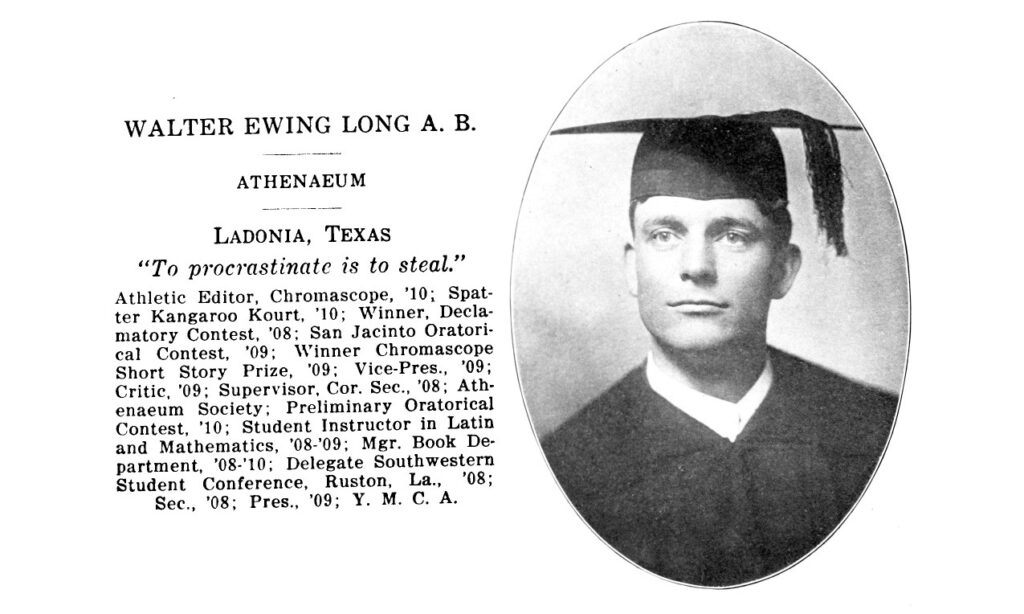
Walter E. Long at AC
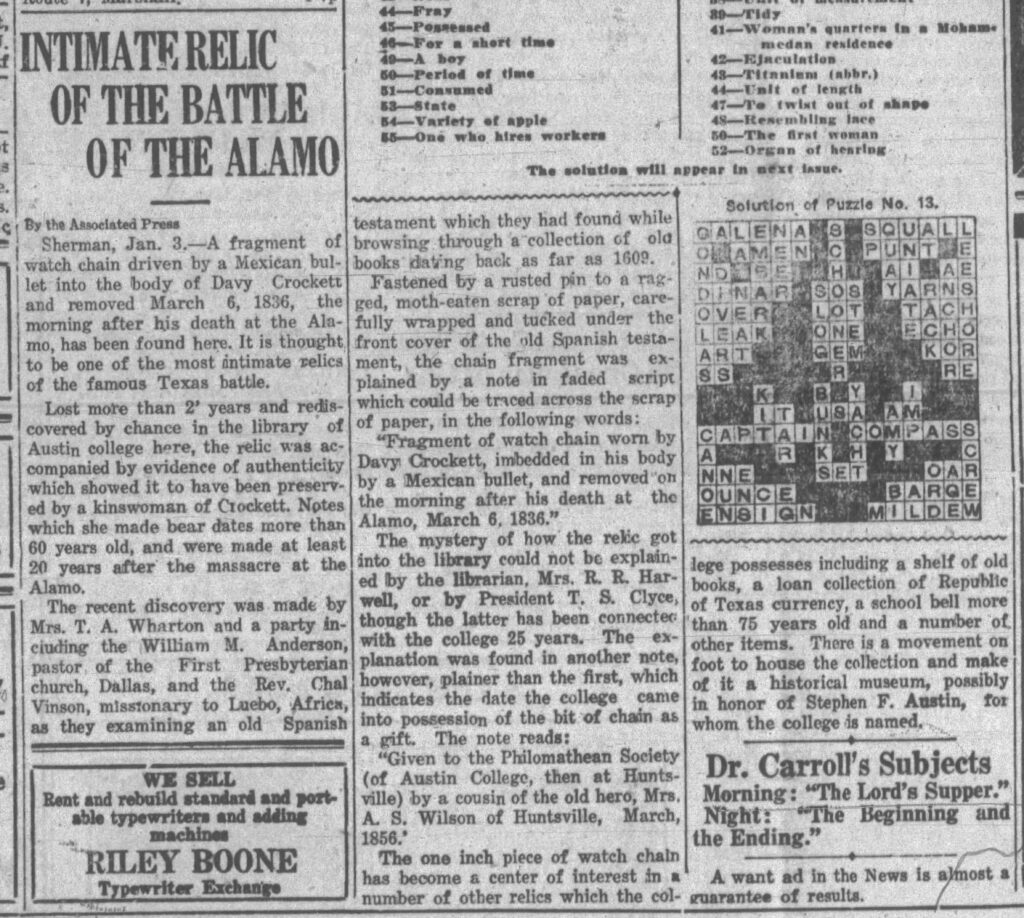
A relic of the Alamo discovered at Austin College in 1925
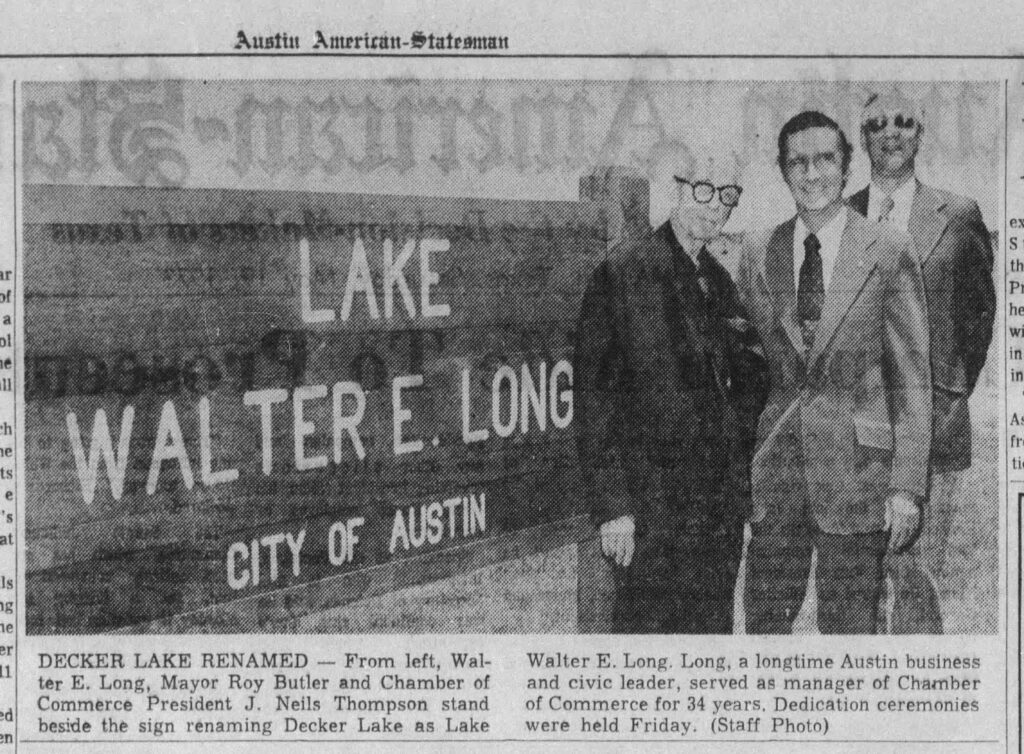
Lake Walter E. Long
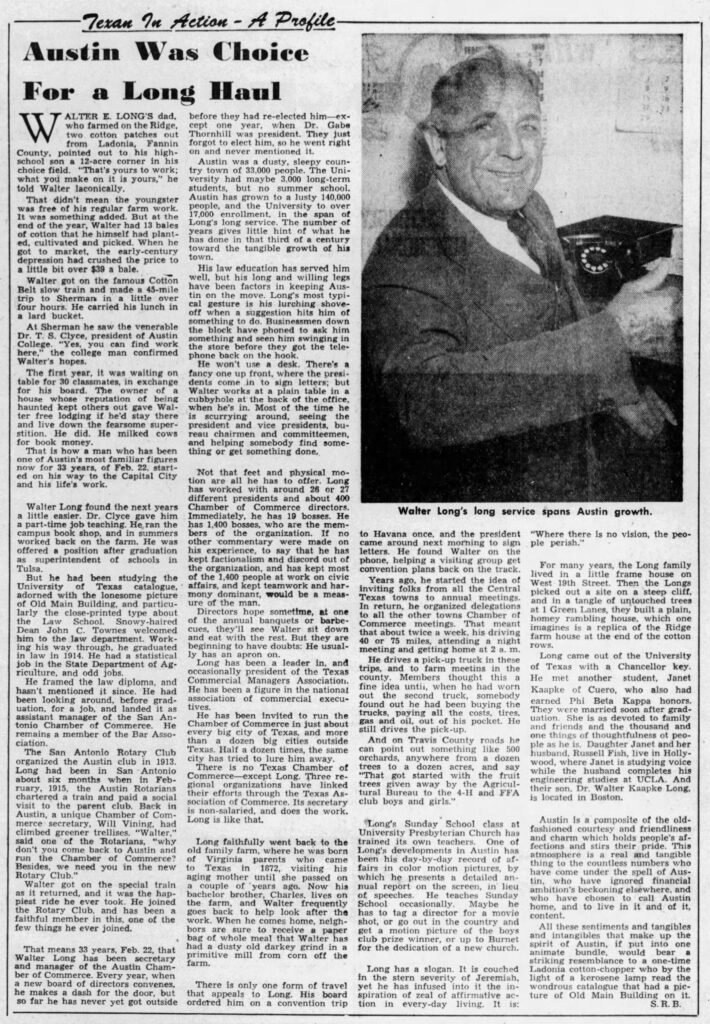
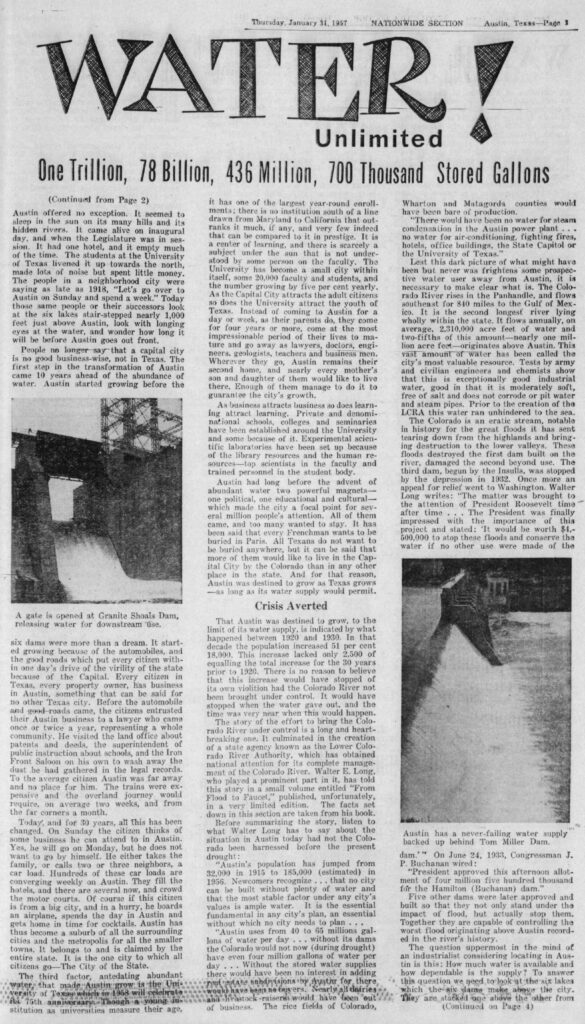
https://www.tshaonline.org/handbook/entries/long-walter-ewing
https://en.wikipedia.org/wiki/Laguna_Gloria

